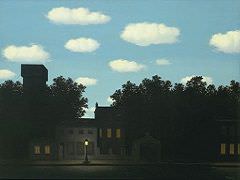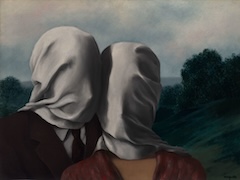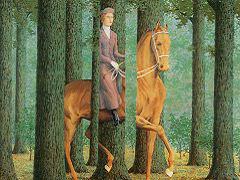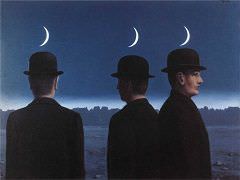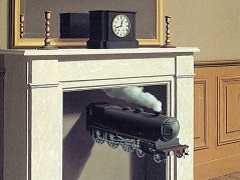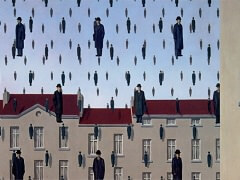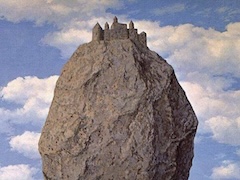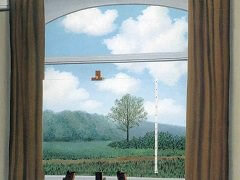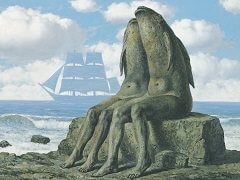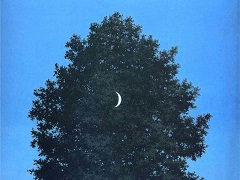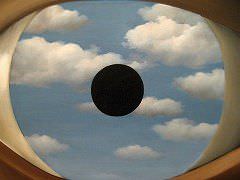Oasis, 1925 by Rene Magritte

Magritte painted Oasis in 1925, a simpler work with a title that is literal and presents no problem at all.
The small table on which the trees are standing (unreal trees, consequently) is painted in Chinese perspective, reversed and not systematized as in European Renaissance perspective. The clouds appear partly in front of and partly behind the crowns of the trees, while the distance between the clouds and the ground is too small to be realistic. Thus Magritte has altered spatial proportions here and shown that perspective is relative. In other words, he has tried to free the natural world from the rules and customs to which it is subjected by our conception of it. Through his presentation our perception becomes intensified, while our experience of space becomes a more intimate one. There is an infinite silence in this painting.
In the clouds (but not on them) is a bright light, and the blue of the sky on the horizon changes color until it approaches the deep midnight blue only in fourteenth - and fifteenth-century Italian painting. For instance, Mantegna in his St. Sebastian painted clouds of this kind, of intense coldness, in a powerful, penetrating blue. In addition, the concept of space here, which has not been subjected to an academic formula, may make us think of Piero della Francesca and Uccello. The attractiveness of the Oasis is the absence of all stereotype effects or mere dexterity; the style of painting is laborious, austere, direct.


